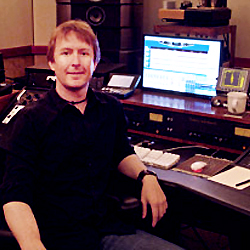
2) Provide Alternate Mixes. A preferable way to present files is for the mix engineer to include alternative versions of the mix: vocal up, vocal down, solo up, solo down, etc. Remember it is important keep these alternate mixes well marked, organized, and documented.
With the advent of DAWs, one question that has come up is whether it is preferable to have stems as part of the delivery. Some engineers prefer stems to allow more tweaking and flexibility in the mastering process. However, there are also several potential drawbacks to this.
Including stems can blur the line between mixing and mastering. The mastering engineer can start to lose objectivity, because he or she is now tasked with balancing the final mix.
Another concern is that the character of the whole doesn’t necessarily translate to the character of each of the stems. In trying to optimize each individual stem, the result is often detrimental to the nature of the final mix.
3) Don’t Over-Compress The Final Mix. Digital audio files should be delivered at the same resolution as the recording. It’s important that the mixes include some headroom to allow the mastering engineer room to work. A good rule of thumb is to have peaks at around -3 dBfs with an average (rms) around -10 to -14 dBfs.
Final bus compression should remain minimal, because it’s not something the mastering engineer can undo. A standard practice can include final compression of the mixes as a reference file to the artist, but it’s best when that’s not included in the delivered files for mastering. With high-resolution audio there is no advantage to maxing out the levels.
In a related issue, it’s helpful to not have fades included on the final mixes. The mastering engineer can make fades shorter, but can’t make them longer. Sometimes in the sequencing you realize you want it longer than you thought you did, just to keep things flowing properly.
A Note On Loudness: There’s been a lot of discussion about the issue of loudness. There are pros and cons to having high levels, but there’s a point where it can be too loud or too quiet. A misconception about a loud file is that it will sound louder on the radio, when in fact the opposite is true. Going through all the compressors on the broadcast can clamp onto a signal and hold it back. The louder a song, the smaller it will sound on the radio.
Similarly, a misconception about MP3s is that the louder the song, the better they sound. The purpose of an MP3 is essentially to shrink the file size, which occurs by eliminating data. The algorithms are designed to throw away data below a certain threshold. Low-level information is discarded. A highly compressed song has no low-level content, therefore the algorithm is throwing away information you can hear.
4) Gear Is Great; The Room Is Better. The most important piece of equipment for a mastering engineer, besides his or her own ears, is the room. The feedback given by the room affects the perspective and opinions of mastering engineers, which in turn influence the decisions they make.
A revealing monitoring environment tells everything about the mix—the good and the bad. This is necessary for mastering engineers to be able to make accurate changes that affect the final translatability of the audio. One of the goals of mastering is to ensure that the project sounds as good as it can on a wide variety of playback systems.
5) Don’t Master Your Own Work. If you are too close to the material, it is hard to emotionally separate yourself from the content, and accurately hear things like level, EQ, and dynamics. This is not because you don’t have the skills, but because it is extremely difficult to have the emotional detachment necessary when you are listening to your own work. An essential role of the mastering engineer is to be emotionally unbiased. The mastering engineer and the mix engineer should be two separate people, in two separate environments.
It is always best if you can involve your mastering house early in the process. Get the specifics for submittal before the final mixes if possible. If they are willing and time permits, submitting your mixes ahead of the mastering session can allow for detection of problems and suggestions for improvement.
Conclusion
Mastering is the final creative step to take your mixes to the next level. The specialized equipment, finely tuned monitoring environment, and most importantly, the unbiased experience of a pro will help you hone your material to a competitive edge.
Following these suggestions can help you enter this final stage with confidence, and help you maximize your time for a smooth and productive session. This will ultimately save you time and money, prepping the way for a productive and hopefully enjoyable experience.
Michael Romanowski is a mastering engineer based in San Francisco. He has many years of experience and has worked with a wide range of artists, including Norton Buffalo, Joe Craven, The Radiators, Too $hort, and Paul Jackson, to name a few. This article is courtesy of Universal Audio.
